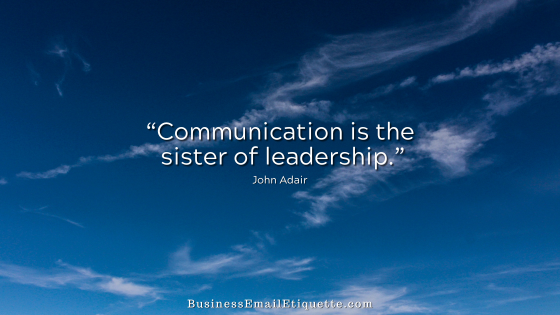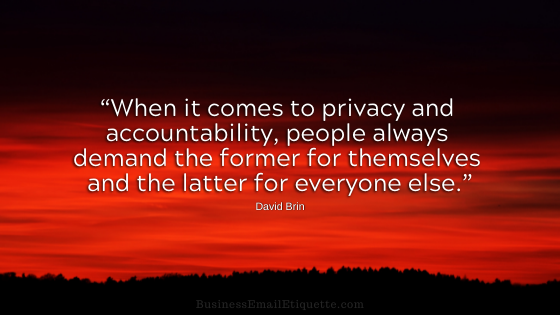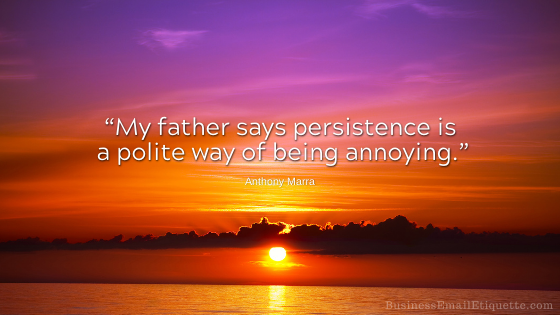Why Business Email Etiquette is Still Important in 2025

In an age of instant messaging, social media, and video conferencing, some might think email is outdated. However, email remains a staple in professional correspondence.
Whether for formal business exchanges, customer interactions, or networking, email communication is still highly relevant in 2025. What often gets overlooked, though, is email etiquette, the set of guidelines that govern polite and effective communication.
Despite the evolving digital landscape, adhering to proper email etiquette is just as important now as ever, and it hasn’t changed since Intel created it in 1995. You can read the original Network Guidelines document RFC 1855 here.
Professionalism is Timeless
Email remains the go-to for formal correspondence even with the rise of more casual workplace communication tools like Slack or Teams. Whether you pitch to a client, follow up with a colleague, or communicate with a business partner, your email is often the first impression someone has of you.
Example: Consider two emails from job candidates applying for a position:
Candidate A:
“Hi, I’m applying for the marketing position. Please see my resume attached. Thanks.”
Candidate B:
“Dear Hiring Manager,
I hope this message finds you well. I am writing to express my interest in the Marketing Specialist position at your company. Please see my resume attached for your review.
While Candidate A gets the job done, Candidate B’s email displays professionalism, respect, and a clear understanding of formal business communication. A well-crafted email conveys seriousness and attention to detail, which is essential in maintaining a professional image in 2025.
Clarity and Efficiency in Communication
Despite the rise of quick communication tools like WhatsApp or instant messaging apps, email is still favored for detailed and organized communication, especially in the workplace. Proper email etiquette ensures that your messages are clear, concise, and easy to understand, reducing the chances of miscommunication.
Example:
A manager sends two versions of an email asking their team to prepare a presentation.
Version 1:
“Hey team, Can someone please work on that presentation we need? It’s important, and I’d like to see it soon. Thanks!”
Version 2:
“Dear Team,
We need a presentation on Q3 sales figures for our meeting on Thursday, September 8th, at 2 PM. Please include key metrics, challenges, and forecasts for Q4. Could everyone ensure their sections are submitted by Wednesday at 10 AM for review?
Thanks,
[Manager]”
The second version is much more precise, leaving little room for misinterpretation. It provides a deadline, specific expectations, and a clear objective, showcasing how proper email etiquette enhances clarity and efficiency.
Building Trust and Relationships
Email is often the primary form of communication between businesses and customers. Your emails’ tone, structure, and professionalism greatly establish trust and build relationships. Customers and clients appreciate emails that are polite, respectful, and considerate of their time.
Example:
A customer service representative responds to a complaint about a delayed order.
Email 1:
“Hey, sorry your package is late. We’ll get it out to you when we can.”
Email 2:
“Dear [Customer],
We apologize for the inconvenience caused by the delay in your recent order. Our team is working hard to resolve the issue, and we will expedite the shipment as soon as possible. You can expect an update within 24 hours. Please accept our sincere apologies for the delay, and thank you for your understanding.
Best regards,
[Customer Service Team]”
The second response demonstrates empathy, accountability, and professionalism, vital to maintaining strong customer relationships.
Respect for Recipients’ Time
In 2025, everyone is inundated with information from all directions, from notifications to meetings to social media alerts. Respecting someone’s time by keeping your emails brief, relevant, and well-organized is vital to modern email etiquette.
Example:
Instead of a long, rambling email with multiple topics, use bullet points and clear headings:
“Hi [Colleague],
Here are the main points for our upcoming meeting:
Thanks for your time!”
Best regards,
[Your Name]”
This respects the recipient’s time and ensures they can quickly process the information and respond accordingly.
Avoiding Misunderstandings in Global Communication
In 2025, businesses and individuals increasingly communicate across different time zones, cultures, and languages. Email provides a more considered and thoughtful form of communication than real-time messaging, which can sometimes lead to misunderstandings due to cultural differences or language barriers.
Email etiquette, such as using formal greetings, avoiding slang, and being mindful of time zones, helps prevent these issues.
Formal greetings like “Dear” or “Best regards” and avoiding idiomatic expressions can ensure clarity and respect for cultural norms when communicating with international partners.
Email Etiquette is Still Critical for Business
Though the digital world continues to evolve, the importance of email etiquette endures in 2025. In professional settings, emails serve as a written record of communications, demand clarity, and play a significant role in building relationships.
Whether you’re a business owner, employee, or consumer, understanding and applying the principles of email etiquette will help ensure that your communications are effective, professional, and respectful. Email may not be as trendy as newer technologies, but mastering it is essential to success today.
And that is what contributes to your professional success.







